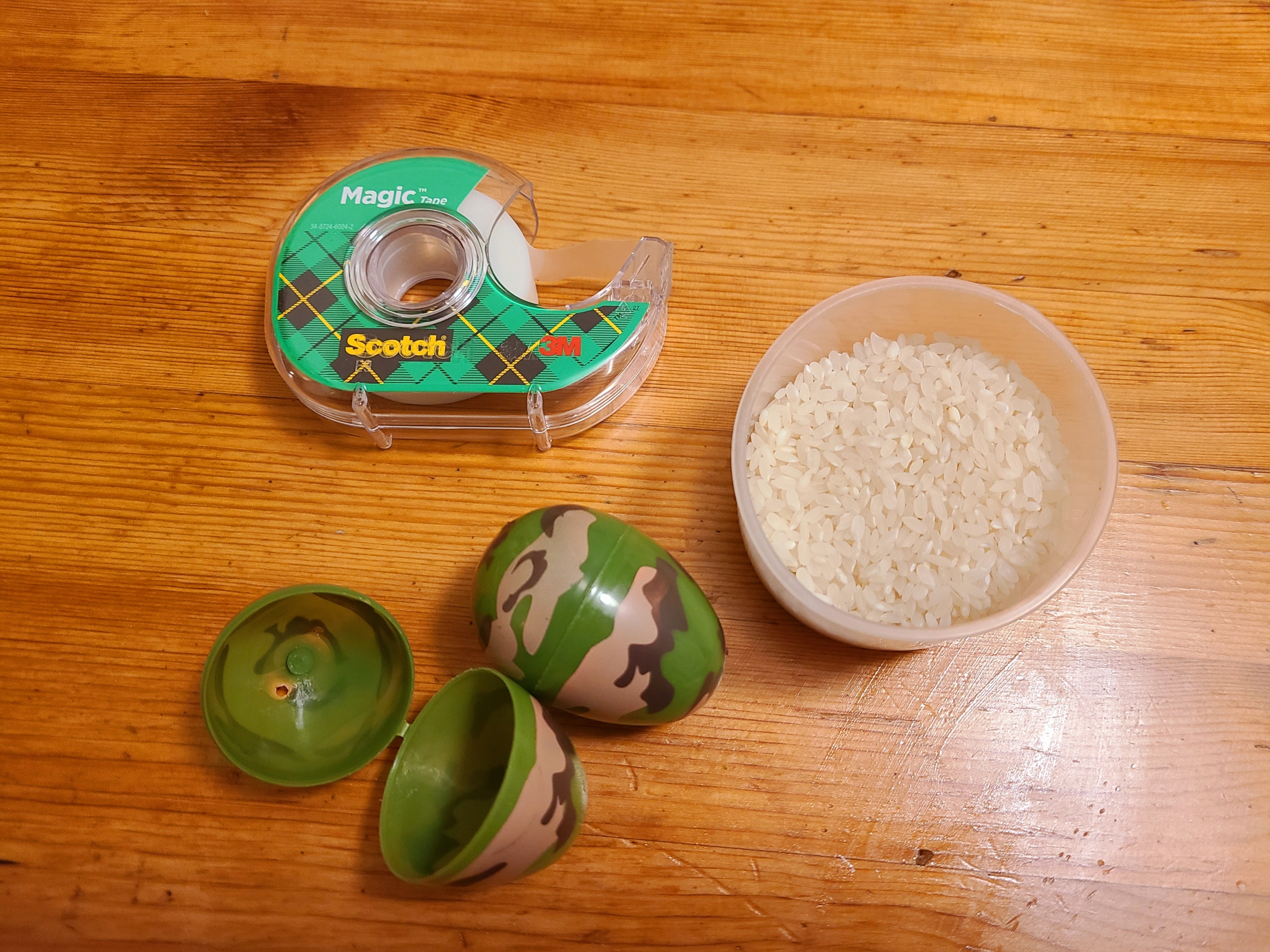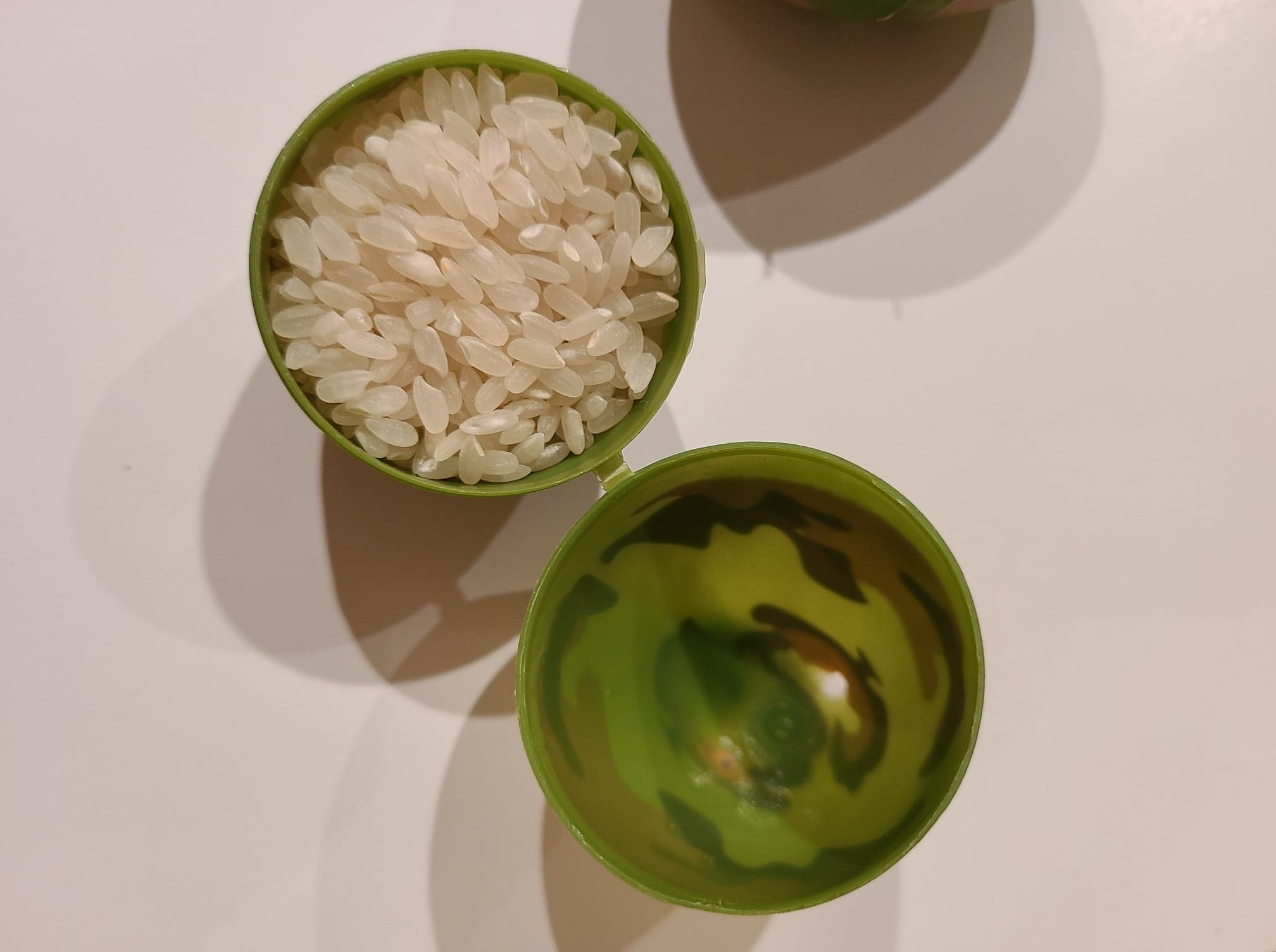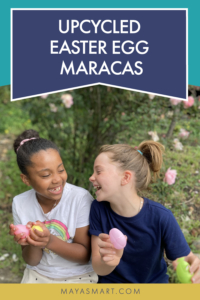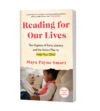By Michelle Luke
Easter. It’s a time of eggs and sweets, beautiful bonnets and celebrations with loved ones, and … So. Many. Plastic Easter eggs! If you’d rather keep them out of the landfill but have way too many for future egg hunts, turn some of them into literacy-supporting maracas that kids can shake along to nursery rhymes and favorite songs.
In this super-easy, two-step craft, you’ll upcycle old plastic eggs into colorful musical instruments to welcome in the spring with a vibrant lyrical celebration. Check out the instructions below, and then read on for tips on how to use your child’s new shaker for maximum brain-building benefit.
Incorporating stories and words with physical activity enhances a child’s story time by tapping into their motor skills and building greater engagement. Speaking in exaggerated, sing-song tones, responding to a child’s verbalizations, and taking turns in conversation are key behaviors that help babies acquire language and older children develop literacy. With these homemade Easter-egg shakers, you’ll incorporate both!

Materials:
- Plastic Easter eggs (as many as you want)
- Dry goods (rice, beans, pebbles, etc.)
- Clear tape
- Mod Podge (optional)
- Colored tissue paper (optional)
Cost: Free! (If you’re one of the rare few who doesn’t have any old plastic Easter eggs on hand, ask around! A neighbor or friend is sure to have one or a million lying around.)

Step 1: Fill your plastic egg(s) with any dry goods of your choice. Rice, beans, or pebbles all work well.

Step 2: Snap the egg shut and tape it closed with a single piece of clear tape. Make sure it’s well sealed.
Bonus step (optional!): The beauty of this craft is that it’s fun, free, insanely easy, and educational! But if you’re ready for a tad more crafting and have some Mod Podge and colored tissue paper on hand, you can also decorate your egg with a tissue-paper collage. Just tear strips of tissue paper and use the Mod Podge to stick it onto your egg after taping it shut.
Congratulations! Your egg is now an instrument that your child can shake along to a favorite nursery rhyme, poem, or song. Invite your child to recite or sing along with you, or let them take the lead. You can participate by clapping along.
Having your child use a shaker to feel the regular cadence of a rhyme’s rise and fall provides a rhythmic template for the developing brain. The emphasis of syllabic meter helps them feel the syncopation of the poem or song, as they engage with it both physically and mentally. See 4 Brilliant Ways Nursery Rhymes Prepare Kids to Read and Write to learn more.
Here are tips for using your shaker to develop important early literacy skills:
- Use your shaker to mark the syllables of your child’s favorite nursery rhyme, having them clap or shake along as you read, emphasizing syllabic meter.
- Use it to keep the beat to your child’s favorite songs, developing in them a sense of syncopation, rhythm, and beat.
- Once your child feels the rhythm of syllables and how they work together in a rhyme, work with them to develop some rhymes of their own that they can recite or sing to the accompaniment of their egg-shaker.
- Enhance the fun (and learning!) by inviting your child to perform his or her own rhyming masterpiece for family members. Hand shakers out to the “audience” to keep the beat as your child recites or sings.
- Your child can even come up with a call-and-response story, where the audience is engaged to use their shakers to emphasize a suspenseful part of the story.
Once you make the shaker, it’s yours to use in so many wonderful ways.
Liked this tutorial? Share it!



